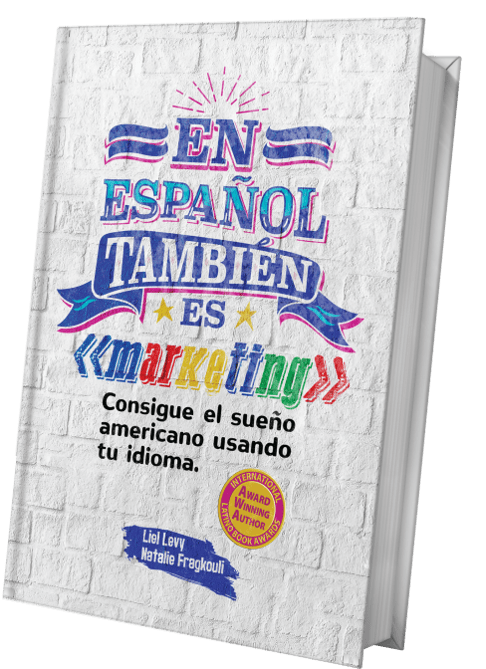Editor’s note: This post was originally published on June 20th, 2020, and was updated on July 23rd, 2021, for accuracy and comprehensiveness.
What is a landing page, and how is it associated with your law firm’s Google Ads campaigns. In this article, we’ll explore the value of landing pages, and we’ll explain why you shouldn’t send your potential clients to your homepage.
In our previous articles, we’ve covered some of the different components that can help you optimize your law firm’s Google Ads campaigns and maximize your Return On Investment. Some of them include the most effective Google Ad formats for attorneys, the Ad extensions you need to use for your legal marketing, and the role of negative keywords for your law firm’s PPC. There is another vital element in PPC, though, that people often overlook, and this is the destination of the searcher as soon as he clicks on the Ad. Let’s find out why you have to avoid, by any means, sending your paid traffic to generic pages, and explore the value of highly relevant landing pages.
- What is a landing page?
Landing pages, in digital marketing, are standalone web pages that are created for an advertising campaign. They are those pages where searchers land after clicking on your law firm’s paid ads (Google Ads, Display Ads, YouTube Ads, Facebook Ads, etc.).
In theory, any page could be considered a landing page, but the core differentiating factor is that they are created to fulfill a specific purpose, to answer to the query of a high intent searcher.
Below you will find the fit of landing pages in your PPC campaigns funnel:
- Landing pages vs Generic Pages
If you’d ask us to explain in one sentence why you should use landing pages over generic pages, our response would be because they are built to convert, and if you set them up according to best practices, they do it exceptionally well. We need to dig a bit deeper, though, and understand the reasoning behind this statement.
a) Your home page or any other generic page on your website, including your practice area pages, is not exclusively built to convert. Generic pages usually have a ton of potential distractions ranging from links to other pages and videos to your social media accounts. Your potential client could be just a step away from getting on your Instagram page and from there checking out their friends’ stories. On the other hand, a landing page is built to convert, there are no other distractions, just your preferred CTAs, a click-to-call button or a web form, for example.
b) When running a PPC campaign, you are trying to capture high intent searchers who are looking for a specific match to their query. Is your homepage or other generic pages matching this message? It’s very rare to come across a case where a generic page is 100% relevant to the exact message as it’s built to contain information about your law firm as a brand, your achievements, and other information. A landing page, on the contrary, is developed to match your Ad copy and offer a definitive answer to the searcher. Let’s break it down with three specific examples.
- Let’s say that you are a Personal Injury Attorney, running Google Ads for multiple high intent keywords, including truck accident attorney near me. This is a very specific query; your Ad copy and messaging are targeting this particular group of accidents. What would convert better, a generic practice area page (PI), or a landing page designed for the keyword you are targeting? According to our experience, the landing page will perform significantly better, letting you maximize your ROI, and sign more new clients with the same budget.
- You might think, why wouldn’t my trucking accident practice area page convert the user? The answer is simple. Even though you do redirect them to a relevant page to the message of your ads, you need to make sure you don’t let them get away before they convert, aka there are no other links that will distract your users. On your trucking accident practice area page you still have the entire menu of your page on the top, probably a sidebal widget, your footer, buttons to your social media. You give too many options to the user to get away.
- Similarly, if you are an Attorney handling Bankruptcy cases and running campaigns for chapter 13, would you prefer sending your leads to your homepage/practice area page, or a dedicated landing page developed to match your chapter 13 Ad copy and your searchers’ needs? Using a landing page can help you increase your caseload, without increasing your ad spend.
Remember: Relevancy contributes to your Quality Score, an important determining factor for your ad’s ranking and CPC and clear CTAs generate the desired number of conversions.
c) Landing pages can help you capture Hispanic audiences without the need to transcreate every page on your website. We’ve talked about the value of transcreation for law firms in a previous article, but if you are not ready to invest in it just yet, a high intent bilingual legal PPC campaign combined with transcreated landing pages can yield amazing results. A transcreated landing page is specific to the searchers’ query, while it also speaks culturally to their needs and creates the necessary emotional bonds that bring you one step closer to the conversion. Also, you need to keep in mind what are the pain points of your market. For example, in a Workers Comp campaign, you should mention in the landing page aimed to Hispanics that they shouldn’t be afraid to report their cases even if they are undocumented, that if they report their cases they cannot be dismissed by law, etc.
d) We’re not over with all the positive aspects of landing pages. As we explained early in the article, they are standalone pages, meaning that they are not part of your main website. We build them in a way to be fast and with zero downtime, offering redundancy to your campaigns and letting you worry-free. Speed and user experience (UX) matter for two reasons. First of all, you don’t want a visitor landing on a page that is slow or down. This would signal a definite miss for your campaign, a waste of your marketing dollars. Additionally, Google attributes Quality Scores to Ad campaigns, and two of the deciding factors are loading speed and UX. You should always aim for the highest possible Quality Score, as it can help you get more quality clicks with an optimized expenditure.
Tip: Don’t forget A/B testing. Test your landing pages, gather evidence, and decide what to include, what to discard, and which specific version works best for your desired results and preferred conversion methods.
Conclusion:
Landing pages are standalone web pages, built to help you increase your law firm’s conversions. They are optimized for speed, relevancy, user experience, and language, making sure that the visitors will find exactly what they are looking for without any unnecessary distractions. Your ultimate goal with bilingual PPC (Google Ads in English and Spanish) is to increase your caseload, and landing pages are a great tool that brings you one step closer to success.
Got any questions about landing pages or your overall strategy? Feel free to contact us, we are the bilingual Google Ads experts for law firms.
July 23rd update
Website speed and security have been in the spotlight, and that’s no coincidence as Google has introduced the concept of Core Web Vitals. The Google page experience update is already part of our new reality, and concentrating more on the speed part of things is inevitable. Landing pages offer fast loading times and seamless user experiences, becoming one of your most valuable allies towards maximizing your Web Core Vitals-performance. Adding dedicated landing pages to your law firm’s PPC campaigns’ has, nowadays, one more reason to be your got-to choice.



